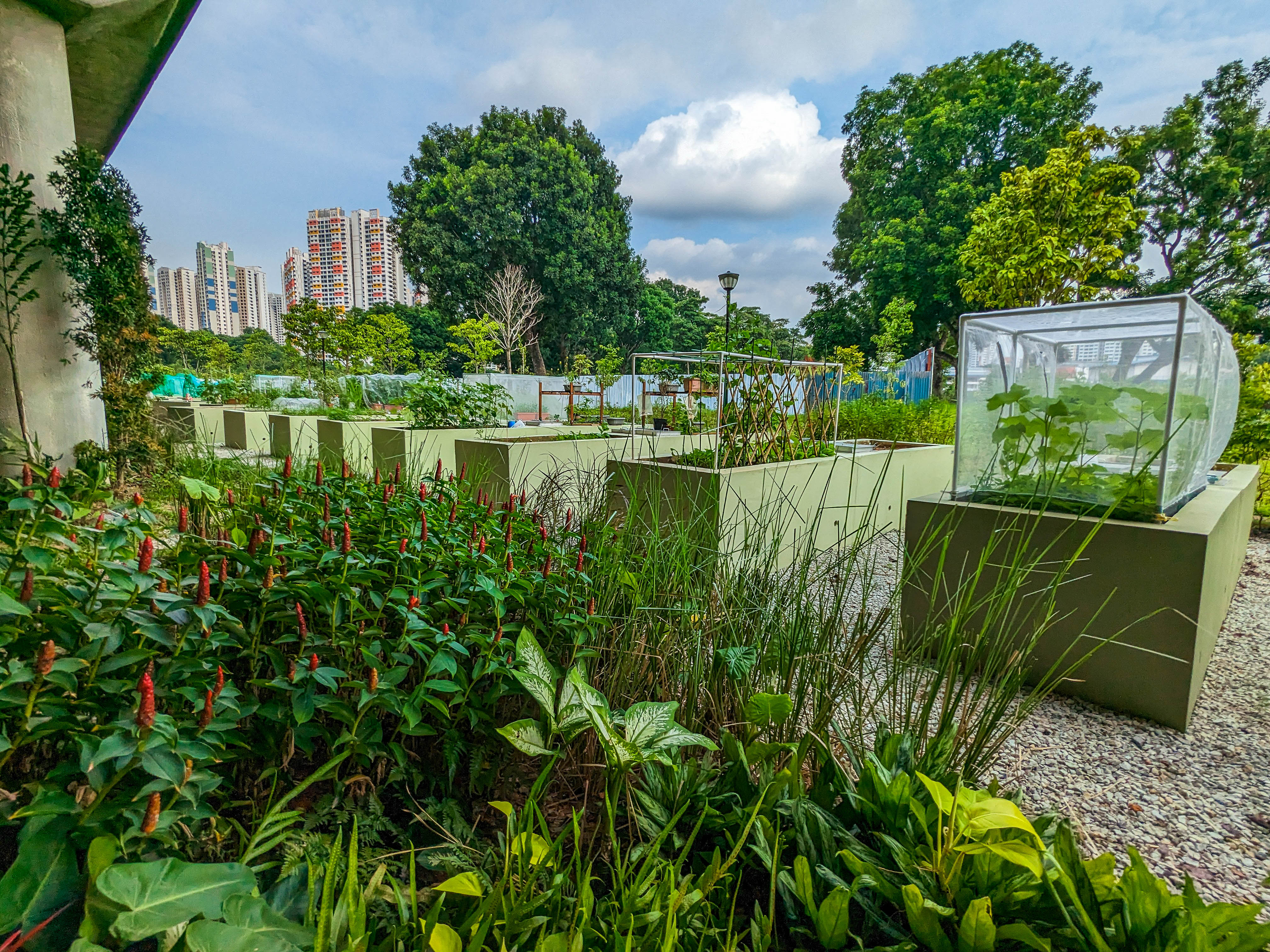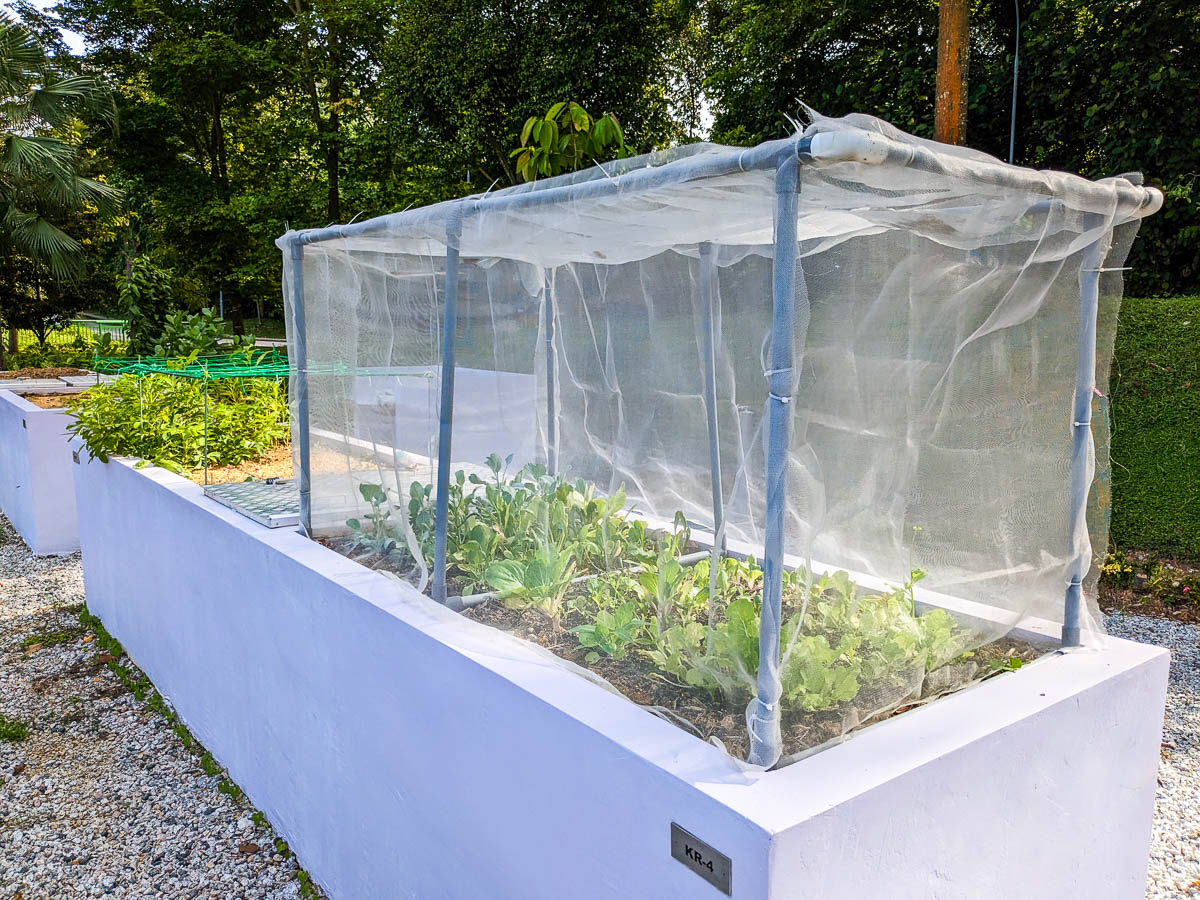Good Allotment Gardening Practices

Allotment gardens that are found in various parks, heartlands, private estates and even within organisations allow aspiring gardeners to hone their skills and grow their own greens. As they are located in common green spaces that are open for the public to visit and appreciate, it is essential that gardeners adopt good gardening etiquette and maintain a well-kept garden plot to ensure safe and enjoyable experience for everyone.
Download our Good Allotment Gardening Practices brochure for reference on what are some good gardening etiquette!
Keeping a well-maintained allotment garden plot
.jpg)
Here are some useful tips to keep your allotment garden plot well-maintained and safe:
- Keep all plants and structures within 1m height from the top of the planter bed
- Keep passageways clear of pots, plant debris and garden tools
- Space out the plants for good air circulation
- Regularly remove weeds and plants that are diseased or dead
- Loosen hardened soil for better plant growth
- Regularly check for stagnant water that might collect at the base of plant stems, amongst leaf litter or inside trellis poles
- Choose plants that suit your needs and gardening schedule
- Adopt safe growing and harvesting practices when growing edible plants
Choosing plants for your allotment garden plot
.jpg)
One of the keys to a successful and thriving allotment garden is choosing plants that have care requirements which match your gardening schedule.
Due to the limited size of the allotment garden plots and safety considerations for gardeners and visitors to the gardens, some plants are undesirable for planting in the plots. Some fruit trees and large shrubs may damage the plot with their roots or block sunlight from neighbouring plots, while some plants may shed a lot of leaves, which would require frequent clearing from paths.
-
- Tall fruit trees – e.g. Moringa (Moringa oleifera), Mulberry (Morus alba), Papaya (Carica papaya), Banana (Musa species and cultivars)
- Thorny plants – e.g. Bougainvillea (Bougainvillea cultivars), Lime (Citrus x aurantiifolia), Pineapple (Ananas species and cultivars), Rose cactus (Leuenbergeria bleo)
- Plants with messy form – e.g. Sugar cane (Saccharum officinarum), Banana (Musa species and cultivars)
- Plants that tend to collect water – e.g. Cocoyam (Colocasia species and cultivars), Bromeliads (Aechmea and Guzmania species, and more)
.jpg)
Edible plants can be a great choice for planting at the allotment garden plots where there is abundant sunlight. Here are some edible plants that are suitable for growing within your plot:
-
- Bayam (Amaranthus tricolor)
- Cai Xin (Brassica rapa Caisin Group)
- Chinese Mustard (Brassica juncea Broad-leaf Mustard)
- Kai Lan (Brassica oleracea Alboglabra Group)
- Sissoo Spinach (Alternanthera sissoo)
- Xiao Bai Cai (Brassica rapa Pak Choi Group)
-
- Brinjal (Solanum melongena)
- Lady's Finger (Abelmoschus esculentus)
- Long Bean (Vigna unguiculata)
- Tomato (Solanum lycopersicum)
- Winged Bean (Psophocarpus tetragonolobus)
-
- Chilli (Capsicum annuum)
- Chives (Allium tuberosum)
- Indian Borage (Coleus amboinicus)
- Mexican Tarragon (Tagetes lucida)
- Sand Ginger (Kaempferia galanga)
- Sawtooth Coriander (Eryngium foetidum)
- Thai Basil (Ocimum basilicum)
Learn more about choosing plants for your garden and horticulture techniques to grow them.
Installing structures on your allotment garden plot

Some plants, such as climbers and soft-stemmed plants, may require support to grow. Others, such as young seedlings or plants that thrive in semi-shade, may require shade netting over them. It is important to ensure that any structure that is installed on allotment garden plots are stable and do not protrude out of the plot for your and others' safety.
Check out the videos below for steps to making various structures for your plants. Feel free to adopt and customize the dimensions to suit your plot’s needs!
Keen to kick-start an allotment garden within your premise? Download our Guide to Designing and Implementing Allotment Gardens to find out how you can do so under the Community In Bloom programme with your landowner's support now!

